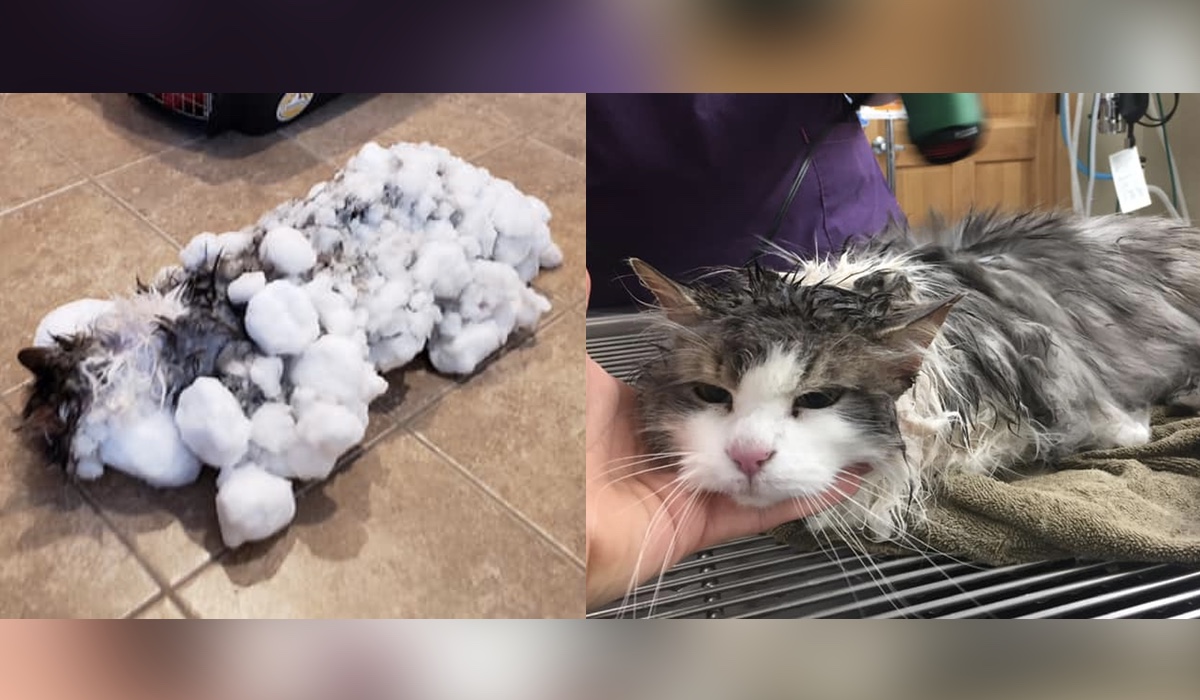
Not all heroes wear capes. Some wear ice-encrusted fur.
Fluffy, an adorably resilient cat recently survived a brush with the polar vortex after her owners found her covered in chunks of ice and snow.
The owners (who were not identified) rushed Fluffy, who looked more ice-ball mop than feline, to the Animal Clinic of Kalispell in Montana, where veterinarians essentially defrosted the cat more than a week ago, according to news reports.
Fluffy wasn't frozen solid, Andrea Dutter, executive director of the Animal Clinic of Kalispell, told the Washington Post. But her temperature was well below 90 degrees Fahrenheit (32 degrees Celsius) — the lower limit on the hospital's thermometers. Cats normally run temperatures a few degrees warmer than humans' average body temperature of 98.6 F, according to PetMD. [Gallery: Freeze-Dried Pets]
"We immediately began to warm her up," Dutter told the Post. "Warm water, heating pads, hot towels . . . within an hour she started grumbling at us."
Fluffy is normally an indoor-outdoor cat who knows her way back home, but was likely immobilized outside after an injury — which doctors discovered after they warmed her up, according to the Post.
Unlike frogs, which can freeze solid over the winter, only to croak back to life when spring returns, there's nothing unusual about cat biology that would allow them to survive being buried in snow. Rather, Fluffy's owners caught the situation before Fluffy froze solid. (Humans can also be reanimated after spending days or hours in sub-freezing temperatures, as long as their cells don't completely freeze and burst, Live Science previously reported.)
Get the world’s most fascinating discoveries delivered straight to your inbox.
"Fluffy was used to living outside," the clinic told Live Science in a Facebook message. "But really it's mostly that the owners found her quickly and rushed her in for us to start caring for her."
- Photos: Champion Cats are Show-Stopping Stunners
- 7 Crazy Things That Happen Only When It's Really Cold
- Meet the Rare and Fabulous Felines of 'Super Cats' (Photos)
Originally published on Live Science.

Tia is the editor-in-chief (premium) and was formerly managing editor and senior writer for Live Science. Her work has appeared in Scientific American, Wired.com, Science News and other outlets. She holds a master's degree in bioengineering from the University of Washington, a graduate certificate in science writing from UC Santa Cruz and a bachelor's degree in mechanical engineering from the University of Texas at Austin. Tia was part of a team at the Milwaukee Journal Sentinel that published the Empty Cradles series on preterm births, which won multiple awards, including the 2012 Casey Medal for Meritorious Journalism.



